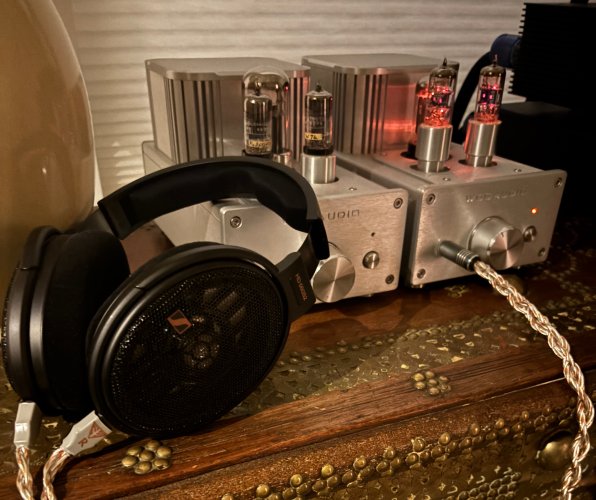Silent One
What silence said... then nothing.
Quote:
For those who have problems or concern about the EML 5U4G tubes with your Woo's amp (especially WA5or WA5LE), as I've stated weeks ago about the blew of the EML 5U4G with my WA5LE, the amp was being dumb sunndenly during my listening session. Then I wrote an email to Jac of JacMusic to report the case and ask for assistance. He is kind enough to help with my problem and said he will contact Jack Wu to see what they can do or further re-solve the problem. Weeks past, got a detail and very informative replied when I asked Jac again last night and he has a suggestion to add a resistor in the series in the circuit for the exceeding value of cap were used. Jac wants me to post his reply here to seek more information and discussion.
Hello Danny,
I was in contact about this with Jack Wu, also by phone. I have asked a few times for the schematic, but I don't have it (yet). From the pictures on the forum there are few things that draw my attention. However, without schematic it is hard for me.
1) It seems to me the first capacitor is 220uF. The maximum value for one tube is 33uF. And that value is really a limit. Even so, design right at the limit is not recommended, unless you are 100% sure you need no reserve for small issues.
With two tubes in parallel, we have 66uF. Still that is exceeded by a multiple here.
2) The 2nd and 3rd capacitor have also values of 220uF. So a total of 660uF. There are two chokes are in between, which protects the rectifier from too high ripple current at normal operation, but the chokes do not protect from surge current at start up. One way or another these caps are empty at switch on, and have to be charged. Exceeding the 66uF, can be done, but then you MUST have an additional series resistor or any other protective circuit. I pasted one in the drawing, it is originally not there.
3) The filaments of the 5U4G are in series, which is by definition not possible for tubes that are not made for it. Let me explain why that is so for all parallel intended tubes. So not just for 5U4G from EML. You also can not do this with 6C33 or EL34, or 12AU7, any other voltage specified tube. Though people do it, it can cause problems. With 6C33 even damaged tube sockets, but that is off topic here.
What happens with the 5U4G? Suppose, at 5Volt, one tube draws 5% more heater current than average , and the other -5% less. Such tubes are normal, good rectifiers. In series operation however you force both heaters at the same current. This can cause a much larger difference in voltage as one might expect. Reason is, the heater which is forced at higher current, will have higher temperature, and from this results higher wire resistance. Resistance goes up much more than 5%! Now comes the issue: The higher resistance will unevenly distribute the 10 Volts. This tube will develop more than 5Volts now, and filament temperature rises even further. The OTHER tube moves into the other direction. The effect can avalanche. So what the one tube does, makes things worse for the other. Quite unexpected voltage differences can occur, exceed the 5% by far. This is so for all tubes, new or NOS, and 5U4G is no exception.
3.1) Most specially you get problems when serializing tubes from different vendors, or production codes, since the heat up behavior is often different. A cold tube has up to 10x lower resistance. Before it is at normal value, 15...30 second may pass. During that time distribution of the 10V into 5V and 5V, is definitely not be the case.
4) The sketch I add to this mail is by Jack Wu, the markings are by me. I see there the transformer is 110V. This is correct for many countries, but some have 115V or 120V. http://en.wikipedia.org/wiki/Mains_power_around_the_world 120V or 110V is 9% more, which by itself exceeds the tolerance of most tube heaters. (max 5%). So I assume 120V and 110V versions are shipped.
So what to do now?
This is very hard to say for me without schematic.
At point 3) I recommend to add the blue wire, as in the attached schematic. This is needed to begin with, and can be done quickly. For 1) and 2) I need the schematic.
I would encourage you to put this information on the forum, and I hope it will spark a useful discussion (and a circuit diagram). Please do not paste my email address to prevent spam, but the website address is fine.
Best regards,Jac
Click to enlarge

Nice collaboration among customer and vendors, dannie01!


































